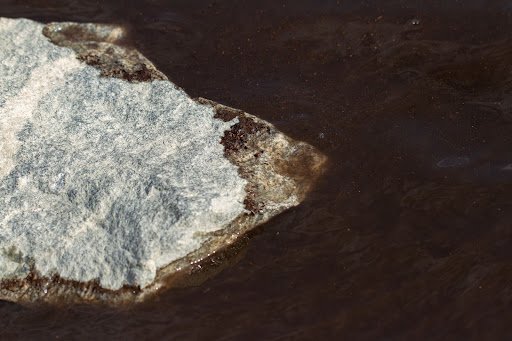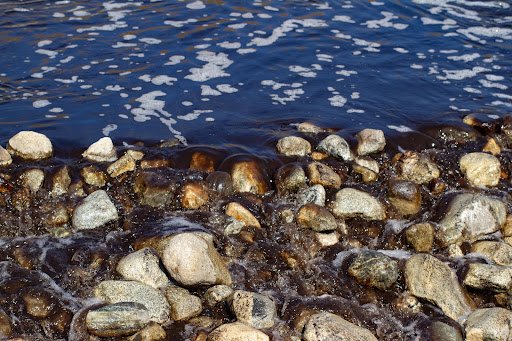Blackwater River?
If you visited the preserve this summer, you may have noticed the buildup of dark, silty mud in the Whitewater River. Some visitors may have even been here when the entire river seemed to run black. This increased transportation of sediment is all thanks to the interesting combination of fire and flash floods.


The end of summer marks the beginning of monsoon season in the southwestern United States. A monsoon is a regional change in winds that can bring with it dust storms, flooding, and dry lightning. At Whitewater Preserve, the biggest concern during this season is flash flooding. This concern grows as the flood season lengthens with increased days of warm weather keeping rain in upper elevations from transitioning to ice and hail. A flash flood is a quick and dangerous overflow of water that can sweep away anything in its path including large trees, boulders, and even vehicles.
A flash flood is different from normal flooding because it can come quickly with little to no warning. Steep, hilly, or mountainous terrain (like we have in the North Fork of Whitewater River) can produce rapid runoff that may lead to flash flooding. When the water cannot permeate the ground it will flow rapidly, and a river that was once 6 inches deep can reach a depth of up to 10 feet within an hour.
There is also a higher risk for flash flood in the Southern Fork of Whitewater River due to the burn scar created by the Apple Fire of August 2020. After a major wildfire, there are no root systems or plants left to protect the soil and ash from erosion. Typically, as water flows over the land, much of the earth is protected by plants, which hold the ground together and soak up some of the water as it travels. Without those plant protectors, nothing is stopping flood waters from carving away larger chunks of earth and ash and carrying it downriver very quickly.
After significant rain storms, much of the ash and debris from the fire washed down and settled along the river running through Whitewater Preserve. This sediment is full of nitrates, which will hopefully help the riparian zones along the river to thrive.
Here are a few tips to keep you safe in potential flash flood conditions:
Turn around, don’t drown
Do not walk or drive through flood waters, 6 inches of water can knock down a person and 1 foot of moving water can move a vehicle
Move to higher ground
If there is ever a potential for flash flooding at the preserve we will err on the side of caution and keep the preserve closed.
Please note that the Preserve may be closed periodically due to flash flood warnings when rain hits the Apple Fire burn areas in the upper Whitewater River watershed. Plan ahead and check our Facebook page, website, and Google listing for preserve updates before your visit.

